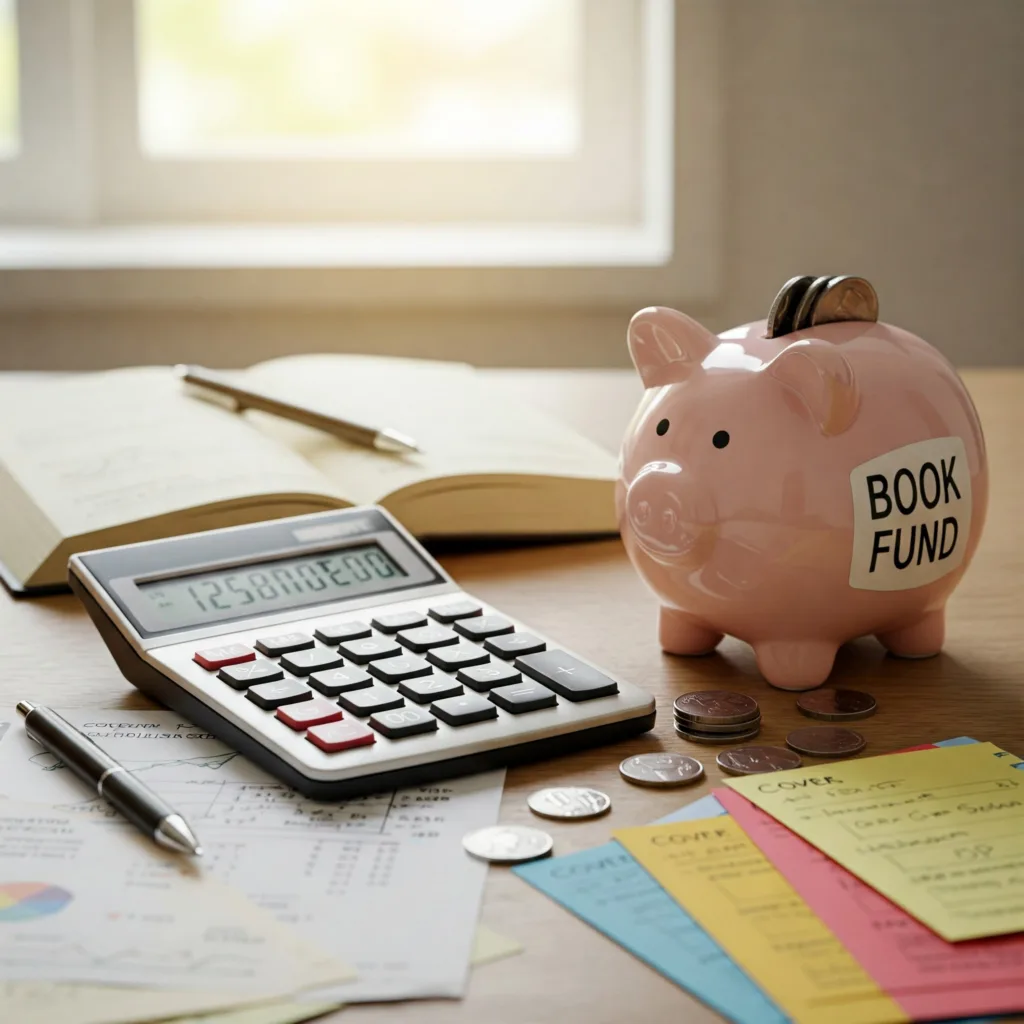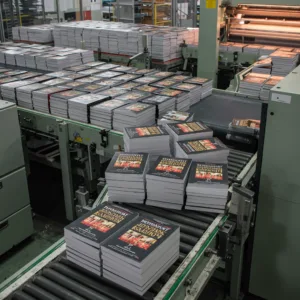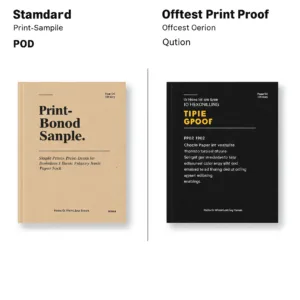Deciding between self-publishing or traditional publishing based on which is more profitable? This comprehensive guide digs into the real costs, potential author earnings, and crucial factors often overlooked by first-time authors. Get the data-driven comparison you need to make the smartest financial choice for your book’s launch.
Neither self-publishing nor traditional publishing guarantees higher profits overall. Self-publishing typically yields higher royalty rates (35-70%+) but demands significant upfront investment ($2k-$5k+ for production, plus marketing) and total author marketing responsibility. Traditional publishing avoids author production costs (potentially offering a $2k-$15k advance) but provides very low royalties (4-15%) and is a much slower process with less author control. Actual profitability hinges on factors like genre, marketing effectiveness, initial investment, and author goals.
But comparing advances and royalty percentages only scratches the surface. Discover the critical insights on hidden costs, the real marketing burden, and how your book’s genre dramatically impacts which path offers the best publishing route for maximizing your author earnings. Read on for the practical framework to choose wisely.
The Two Publishing Paths: A Head-to-Head Financial & Practical Comparison
To figure out which path might be more profitable for you, let’s break down the typical financial realities and practical considerations of both traditional and self-publishing in the market.
Traditional Publishing: The Legacy Route
This is the path most people envision when thinking about publishing, though it’s important to understand the distinction between printing vs. publishing.
Essentially, you (or more commonly, your literary agent) pitch your manuscript to publishing houses. If accepted, the publisher invests in producing, distributing, and (to some extent) marketing your book.
The Money: Advances & Royalties
- Advance Payments: If a publisher acquires your book, they’ll typically offer an advance against future royalties. For a first-time author, this often ranges from $2,000 to $15,000, though it can sometimes be $0, especially with smaller presses. Think of this as a pre-payment; you won’t see any further royalty checks until your book sales have earned back this initial amount (a process called “earning out”). Remember, if you have a literary agent (usually required for major publishers), they’ll typically take a 15% commission on this advance and future royalties.
- Royalty Rates: Once your advance is earned out, you start receiving royalties. These rates are generally lower: expect around 4% to 15% for print books (often calculated on the net price the publisher receives, not the cover price) and typically 20% to 30% for ebooks.
- Payment Schedules: Don’t expect quick cash flow. Royalty payments are usually made semi-annually or annually, and there’s often a delay in reporting, meaning you might wait 6-12 months after sales occur to receive payment.
- Upfront Costs for the Author: Technically, the production costs (editing, design, printing) are covered by the publisher, meaning zero direct upfront financial outlay for you. However, the time investment in researching agents, crafting query letters, and potentially waiting years for responses is significant. Increasingly, even traditionally published authors are expected to actively participate in (and sometimes fund aspects of) their own marketing efforts.
- Key Pros & Cons:
- Pros: Potential for wider distribution including physical bookstores, the prestige of being selected by a known publisher, no direct production costs, professional team handling editing and design.
- Cons: Extremely competitive and high rejection rates, very slow process (often 2-3 years from signing to launch), low royalty percentages, loss of creative and business control, often minimal marketing push for debut authors.
Self-Publishing: The Entrepreneurial Route

Here, you are the publisher, taking on the responsibilities outlined in a comprehensive self-publishing guide.
You manage or hire freelancers for every step – editing, cover design, formatting, distribution setup (like Amazon KDP or IngramSpark), and all marketing and promotion.
The Money: Costs & Royalties
- Upfront Costs (Author Funded): You pay for everything before earning a single dollar. Typical estimated costs in the US market include:
- Editing: $1,500 – $4,500+ (depending on length and level needed)
- Cover Design: $200 – $800+ (professional design is crucial)
- Formatting: $50 – $750+ (for ebook and print layouts)
- Marketing & Advertising: $0 to potentially $15,000+ annually (especially if relying on ads). Understanding the full scope of self-publishing costs reveals that a realistic budget for a professional launch often starts at $2,000 – $5,000, excluding major advertising spend.
- Royalty Rates: This is where self-publishing shines on paper. Platforms like Amazon KDP offer 35% or 70% royalty options for ebooks (depending on price and territory). Print-on-demand royalties are usually lower. Direct sales from your own website can yield 90% or more. However, be aware that the advertised rate (e.g., 70%) isn’t your final take-home; platform fees, delivery costs (for ebooks), taxes, and varying international pricing reduce the actual percentage, potentially closer to an average of 40-50% from major platforms.
- Payment Schedules: Generally much faster, with platforms like KDP paying out monthly, about 60 days after the end of the month in which sales occurred.
- Key Pros & Cons:
- Pros: Full creative and business control, much faster time-to-market (weeks or months), significantly higher royalty percentages per sale, direct access to sales data.
- Cons: RRequires significant upfront investment and financial risk (learning how to control your self-publishing budget is crucial), you bear 100% of the workload or hiring costs, distribution is primarily online (bookstore placement is rare and difficult), demands strong marketing and business skills, average sales can be very low (many books sell fewer than 100 copies).
At a Glance: Quick Comparison Table
| Feature | Traditional Publishing | Self-Publishing |
|---|---|---|
| Upfront Cost: | Generally $0 (Author Time Investment) | $2,000 – $5,000+ (Author Funded) |
| Royalty Rate: | Low (4-15% Print, 20-30% Ebook) | High (35-70%+ potential, varies greatly) |
| Advance?: | Yes (Typically $2k-$15k for debut) | No |
| Time to Market: | Very Slow (2-3+ Years post-deal) | Fast (Weeks/Months) |
| Creative Control: | Low | High / Total |
| Distribution: | Potentially Wide (Online & Bookstores) | Primarily Online |
| Marketing Burden: | Shared (but often minimal author support) | 100% Author Responsibility |
Beyond the Numbers: Critical Insights for Your Decision
While the financial comparisons provide a foundation, several less obvious factors significantly influence which path might ultimately be more profitable and suitable for you. Let’s explore some deeper insights.
Insight #1: What Does “Profit” Really Mean? The Book as a Tool vs. Product
Is your primary goal to earn money directly from book sales, or could your book serve a different purpose? For many authors, especially in non-fiction (think business, self-help, coaching), the book itself isn’t the main profit center. Instead, it acts as a powerful marketing tool – a “super business card” – that builds authority, generates leads, and attracts clients for higher-priced services like consulting, courses, or speaking engagements.
If this sounds like your strategy, self-publishing often provides a distinct advantage. Its speed allows you to launch the book quickly to coincide with business goals. The total control over content and marketing lets you tailor the message precisely. Plus, you can directly capture reader information (like email addresses) to nurture leads. The long timelines and lack of control in traditional publishing can hinder this “book as a tool” approach.
Insight #2: The True Cost of “Failure” – Weighing Financial Loss vs. Lost Time & Opportunity
No one likes to think about it, but what happens if your book doesn’t sell well? The type of loss you face differs significantly between the two paths:
- Self-Publishing Failure: The primary cost is direct financial loss. Money spent on editing, cover design, and advertising is gone, potentially impacting your finances significantly. A poorly produced book could also harm your reputation.
- Traditional Publishing Failure: The main costs are lost time (potentially years spent querying and waiting) and lost opportunity (you could have been writing the next book or pursuing self-publishing). While rejection stings, you typically haven’t lost your own money on production.
Consider which type of risk feels more manageable for you as a first-time author, especially if working with a limited budget.
Insight #3: Marketing Reality Check – You’re the CMO, Regardless of Path

Traditional publishers rarely roll out extensive marketing campaigns for debut authors. While they handle distribution and some catalog listings, the heavy lifting of building an audience and driving consistent sales largely falls on you.
Self-publishing simply makes this explicit – you are 100% responsible for marketing. This requires developing skills in areas like social media, email list building, potentially running ads, and understanding sales analytics.
As best-selling self-published author Mark Dawson suggests, mastering tools like Amazon Ads is increasingly becoming “a requirement” for visibility in the crowded marketplace.
Whether you self-publish or go traditional, be prepared to invest significant time and potentially money into letting readers know your book exists.
Insight #4: Genre Matters – Follow the Readers (and the Money)
The optimal publishing path can also depend heavily on your book’s genre. Reader expectations and buying habits differ wildly:
- Genres Thriving in Self-Publishing: Many genres like Romance, LitRPG, Cozy Mysteries, and certain types of Thrillers have massive online readerships, particularly within ecosystems like Amazon’s Kindle Unlimited. Readers often consume books quickly and follow prolific authors. Self-publishing allows authors to meet this demand rapidly and connect directly.
- Genres Often Benefiting from Traditional Publishing: Literary Fiction, complex Non-Fiction needing academic or critical validation, Children’s Picture Books (reliant on illustration quality and bookstore discovery), and some historical works may still gain more from a traditional publisher’s imprimatur, editorial rigor, and potential access to reviewers and physical retail channels.
Actionable Tip: Research the top-selling authors in your specific genre within the US market. How are most of them published? Understanding your genre’s specific ecosystem is key.
Insight #5: Navigating Hybrid Publishing & Service Providers
You might encounter “hybrid” publishers or companies offering publishing packages for a fee. Understand that most of these operate on a service model: their primary income is the fee you pay, not necessarily book sales. They offer services like editing, design, and sometimes distribution assistance, providing a potential shortcut and professional package.
However, the return on your investment is uncertain and depends heavily on the provider’s quality and your continued marketing efforts. It’s best suited for authors with a specific budget who prioritize speed and a professionally managed process over maximizing their individual royalty percentage or learning the intricacies themselves. Vet these providers very carefully before committing, perhaps using guidelines from watchdog organizations like the Alliance of Independent Authors.
Making Your Choice: A Practical Framework

Now that you understand the financial models, practical realities, and deeper considerations, how do you actually decide which path is best for your first book? Let’s walk through a framework based on your personal situation.
Assess Your Resources & Priorities
Be honest with yourself as you consider these key questions:
- What’s your realistic upfront budget?
Can you comfortably invest $2,000 – $5,000 or more into editing, cover design, and initial marketing required for professional self-publishing without expecting an immediate return? Or is a zero-upfront-cost option (traditional) essential right now? - How much time can you commit beyond writing?
Self-publishing demands significant time for managing the process, learning new skills, and continuous marketing. Do you have the bandwidth for this alongside writing and other life commitments? - Are you willing to be an entrepreneur?
Self-publishing means running a small business. Are you excited by the prospect of learning marketing, analyzing sales data, and managing freelancers? Or does the idea of focusing solely on writing while someone else handles the business side (even with less control) appeal more? - What truly matters most: Control or Validation/Distribution?
Is having the final say on every aspect of your book paramount? Or is the potential validation from a traditional publisher and access to physical bookstores a higher priority, even if it means lower royalties and less control? - What’s your risk tolerance level?
Are you more comfortable risking upfront capital for potentially higher returns (self-publishing)? Or do you prefer risking time and potential rejection for a path with no direct financial outlay for production (traditional)?
Answering these questions candidly will likely point you more clearly toward one path or the other.
Risk Mitigation Strategies
Whichever route you lean towards, you can take steps to minimize potential downsides:
If You Choose Self-Publishing:
- Start Lean: If budget is tight, prioritize a professional edit and understanding book cover design costs for a compelling cover – these are non-negotiable for credibility. You can potentially handle formatting yourself initially or use lower-cost tools.
- Build Your Email List Early: Start collecting emails from interested readers before you launch, a foundational step detailed in guides for authors from email marketing experts. This gives you a direct line for promotion that you fully control.
- Learn Marketing Gradually: Don’t feel pressured to master everything at once. Start with free or low-cost methods (social media engagement, reaching out to relevant bloggers) and learn about paid ads (like Amazon Ads) incrementally.
- Utilize Beta Readers: Get feedback from trusted readers before publishing to catch errors and improve the manuscript.
If You Pursue Traditional Publishing:
- Do Your Homework: Thoroughly research literary agents who represent your specific genre and have a strong track record. Personalize your query letters.
- Perfect Your Submission: Ensure your query letter, synopsis, and opening chapters are polished to perfection. First impressions count.
- Understand the Contract: If you get an offer, review the contract carefully (ideally with agent guidance or legal counsel) regarding rights, royalty clauses, and termination conditions.
- Have a Plan B: Set a realistic timeframe for querying (e.g., 6-12 months). If you don’t gain representation within that window, be prepared to reassess and potentially pivot to self-publishing.
Actionable Next Steps: Moving from Decision to Publication
Feeling clearer about which path might be right for you? Great! Decision paralysis is common, but the key now is to take the next tangible step. Here’s what you can do based on your inclination:
If Leaning Towards Self-Publishing…
- Research Platforms: Dive deeper into Amazon KDP (Kindle Direct Publishing) and IngramSpark. Understand their requirements, royalty structures, and distribution options (KDP Select for exclusivity vs. going “wide”).
- Identify Potential Vendors: Start researching reputable freelance editors (developmental, copy, proofreading) and cover designers. Marketplaces like Reedsy or professional organizations can be good starting points. Get quotes to refine your budget.
- Join Author Communities: Engage with online forums or groups (like the r/selfpublish subreddit mentioned in your sources) to learn from other indie authors’ experiences and ask questions.
- Start Building Your Email List NOW: Even before your book is ready, create a simple landing page or website to start collecting email addresses from potential readers interested in your work or genre.
If Leaning Towards Traditional Publishing…
- Research Literary Agents: Use resources like QueryTracker, Manuscript Wish List (#MSWL on social media), and publisher submission guidelines (some smaller presses accept direct submissions) to identify agents who represent your specific genre and are currently open to queries.
- Perfect Your Submission Package: Polish your query letter until it shines. Write a compelling synopsis. Ensure your opening chapters (usually the first 3 or ~50 pages) are impeccably edited and represent your best work.
- Query Strategically: Target agents in batches (e.g., 5-10 at a time). Follow their submission guidelines exactly. Keep meticulous records of who you’ve queried and when.
- Set Realistic Timelines (and a Plan B): Understand that querying takes time and patience. Decide on a timeframe (e.g., 6-12 months) for focused querying. If you don’t secure representation within that period, have a plan ready – which might involve self-publishing.
Conclusion: Profitability is Personal, Make an Informed Choice
Ultimately, deciding whether self-publishing or traditional publishing is more profitable comes down to your unique circumstances. As we’ve explored, there’s no universal winner. The best path depends entirely on your definition of success, your financial situation, your tolerance for risk, the nature of your book, your marketing aptitude, and your long-term career aspirations.
The most crucial takeaway isn’t a definitive answer, but the understanding that success on either path demands a high-quality book, a strategic approach to the business side of writing, persistent marketing efforts, and a view towards building a career, not just launching a single product.







